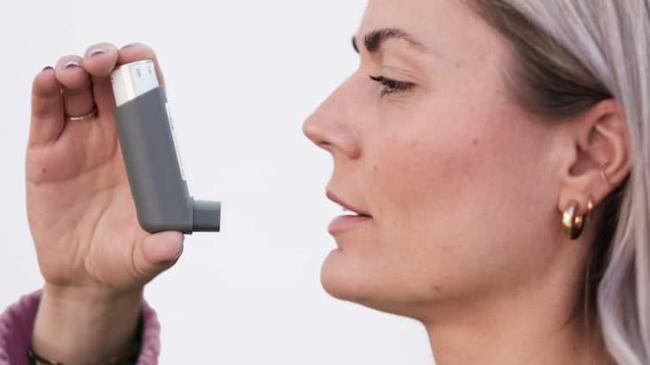Summary
Fans who had tuned into NBC Sports coverage of the Kentucky Derby on Saturday, May 3, grew concerned for host Mike Tirico when he suddenly left the broadcast. NBC Sports correspondent Ahmed Fareed took over for Tirico, alongside Carmelo Anthony, sharing only that Tirico started to feel under the weather.
Source: Miami Herald on MSN.com

AI News Q&A (Free Content)
Q1: What caused Mike Tirico to leave the Kentucky Derby broadcast, and what does this reveal about the risks of food allergies at public events?
A1: Mike Tirico left NBC's Kentucky Derby coverage due to a significant nut allergy reaction. His sudden departure highlights the importance of allergy awareness and preparedness at public gatherings, especially since allergic reactions can occur unexpectedly and require immediate medical attention. Reactions can range from mild symptoms to severe anaphylaxis, which is potentially life-threatening and demands rapid administration of epinephrine and access to emergency care.
Q2: What are the most common food ingredients known to trigger allergic reactions, and how prevalent are food allergies in the general population?
A2: Common food allergens include cow's milk, peanuts, eggs, shellfish, fish, tree nuts, soy, wheat, and sesame. In developed countries, food allergies affect about 4% to 8% of people, with higher prevalence in children than adults. Severe allergic reactions, known as anaphylaxis, can be triggered by even trace exposure to these ingredients, emphasizing the necessity for clear food labeling and heightened awareness for both consumers and food service providers.
Q3: What are the health risks associated with artificial and synthetic food additives, especially for individuals with allergies?
A3: Recent scientific reviews indicate that artificial food additives—such as preservatives (sodium nitrite, sulfites), synthetic colorants (Ponceau 4R), and flavor enhancers—can exacerbate allergic reactions and respiratory diseases. These additives contribute to systemic inflammation, oxidative stress, and immune dysregulation, increasing the risk of bronchial hyper-responsiveness and allergic reactions, particularly in sensitive groups like children, pregnant women, and individuals with pre-existing conditions.
Q4: What are the latest technological advancements in helping consumers avoid allergic food ingredients while shopping?
A4: Innovations such as digital health shopping assistants have been developed to help individuals with allergies or dietary restrictions. These mobile apps can scan product ingredient labels, identify allergens or unwanted ingredients, and quickly inform the consumer of potential risks. This technology streamlines the shopping process, improves safety for people with food allergies, and reduces the likelihood of accidental exposure to allergens.
Q5: How do food packaging and labeling practices contribute to consumer safety regarding allergic ingredients?
A5: Accurate food packaging and clear labeling are essential for allergy management. Regulatory frameworks like the Food Information for Customers (FIC) in the EU mandate that allergens are clearly disclosed on packaging.
Q6: What does recent scholarly research suggest about the effectiveness of current methods for determining safe intake levels of food allergens?
A6: Recent studies emphasize the use of dose-to-failure food challenge tests, where the allergen dose is incrementally increased in allergic individuals until a reaction occurs. Bayesian survival models are used to estimate safe intake levels for various allergens. However, there is variability in model accuracy, and researchers recommend combining multiple statistical models to improve predictive reliability for individual sensitivity thresholds.
Q7: What are the latest recommendations for managing severe allergic reactions to food ingredients, particularly in high-risk environments?
A7: Best practices for managing severe food allergic reactions include immediate avoidance of known allergens, carrying epinephrine auto-injectors, and having a clear emergency action plan. In high-risk settings like public events, staff should be trained to recognize and respond to anaphylaxis swiftly. Dietary counseling and allergen exclusion trials remain important, especially for pediatric patients and individuals with complex allergy profiles.
References:
- NBC Sports host Mike Tirico said on social media he hates being a "late scratch" from Saturday's 151st Kentucky Derby because of a "significant" nut allergy reaction during coverage of the marquee race at Churchill Downs. https://www.wtap.com/2025/05/04/nbc-sportscaster-mike-tirico-leaves-kentucky-derby-coverage-with-nut-allergy/
- Food allergy - Wikipedia https://en.wikipedia.org/wiki/Food_allergy
- Effect of Artificial Food Additives on Lung Health-An Overview. Published: 2025-04-08
- Digital health shopping assistant with React Native: a simple technological solution to a complex health problem. Published: 2022-10-21
- Hybrid consistency and plausibility verification of product data according to FIC. Published: 2021-02-03
- Bayesian Stacked Parametric Survival with Frailty Components and Interval Censored Failure Times. Published: 2019-08-29




